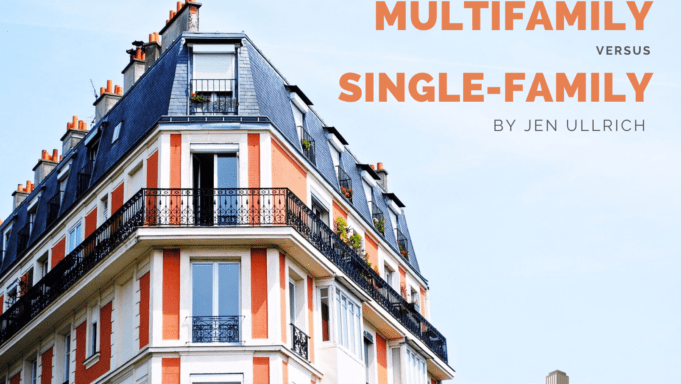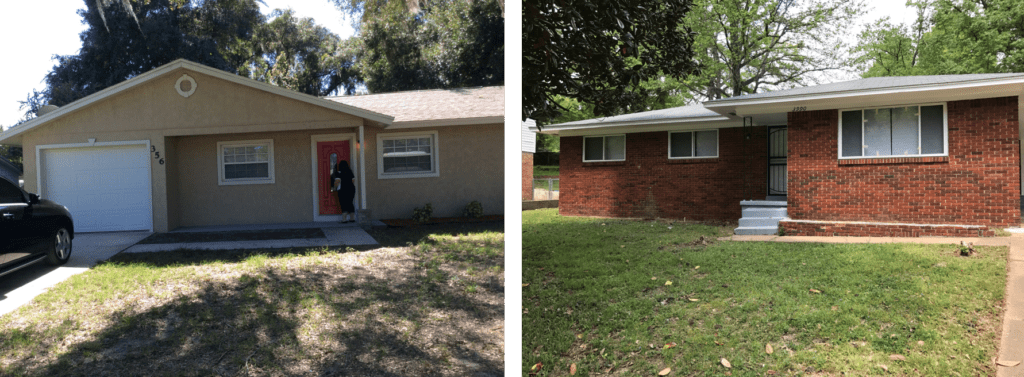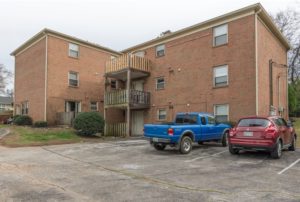
Why Multifamily Kicks Single Family’s A$$
 When I first started investing in real estate back in 2015, I went the single family house route. I saved up the down payment, submitted a crazy amount of documents to get a mortgage and voila, two months later, I closed on a 3 bedroom, 2 bathroom house. Everything was going well and then I bought my second single family house, same ordeal. It took me another year to save up the down payment, again submitted a crazy amount of documents for the mortgage and I was the owner of two single family homes.
When I first started investing in real estate back in 2015, I went the single family house route. I saved up the down payment, submitted a crazy amount of documents to get a mortgage and voila, two months later, I closed on a 3 bedroom, 2 bathroom house. Everything was going well and then I bought my second single family house, same ordeal. It took me another year to save up the down payment, again submitted a crazy amount of documents for the mortgage and I was the owner of two single family homes.

However, the second single family home sat vacant for four months because I hired the wrong team member, my property manager. Having only two single family homes and one sitting empty left me with a 50% vacancy and me having to cover that entire mortgage myself for those four months.
It wasn’t until I hired the next property manager that I found out why my home sat vacant for all that time. Being an out of state landlord, I wasn’t able to go to the property easily. I relied on communication from the management team to provide insight & recommendations on the property. The new management team alerted me that there was another home across the street that was boarded up. Once someone purchased that home & took the boards down to rehab the property, I was able to easily find a tenant. It’s important to have open communication with your team and troubleshoot your issues in order to create and grow a successful business. If I had only hired the right team sooner, we could have brainstormed ideas about the home across the street and I could have avoided all that stress and pain.
Listen to the audio version of this article:
After that eye opening experience and tough lesson, I started to learn about multifamily and listened to Jake & Gino talk about things like:
- Economies of scale
- Tax benefits
- The velocity of money
In 2018 I set out to buy my first multifamily property and purchased a duplex. Now having three properties and four units, if one was vacant, that’s only a 25% vacancy, which was still not a great percentage, but I was getting better at finding deals and underwriting. Now, having only a duplex, I still wasn’t able to cost effectively leverage things like cost segregation and see the power of the velocity of money.
having three properties and four units, if one was vacant, that’s only a 25% vacancy, which was still not a great percentage, but I was getting better at finding deals and underwriting. Now, having only a duplex, I still wasn’t able to cost effectively leverage things like cost segregation and see the power of the velocity of money.
Economies of Scale
Let’s fast forward to 2019 and now I’m really ready to buy my first large asset. I saved up the down payment and using one of my previously purchased single family homes and a 1031 exchange, I purchased an 8 unit property. With much less paperwork and a commercial loan from a community bank, I brought my portfolio to a total of 11 units. If I have one vacancy now, which is 9%, I still have 10 units paying me each month that can cover the mortgages and expenses.
 In terms of expenses, with economies of scale, if I need to replace a roof on a single family home, that’s one unit to one roof. With a multifamily property, I can have multiple units under one roof. The expense is not such a shock, when you have multiple units contributing rent for that expense.
In terms of expenses, with economies of scale, if I need to replace a roof on a single family home, that’s one unit to one roof. With a multifamily property, I can have multiple units under one roof. The expense is not such a shock, when you have multiple units contributing rent for that expense.
Tax Benefits
With the purchase of the 8 unit property, I was able to take advantage of a cost segregation study. A cost segregation study allows investors to realize significant tax advantages. Essentially, you are able to break the entire property down by the “useful life” of the various components of the property, allowing you to depreciate much of the property on an accelerated schedule. This study can cost thousands of dollars which makes it inefficient to perform on single family homes.
In that interview, Boomer also touches on the passage of the Tax Cuts and Jobs Act which allowed me to take advantage of 100%, first year bonus depreciation. If you’re a regular listener of the podcast, you’ve heard Jake mention that the tax benefits on their third property allowed him to become financially free and quit his W2 job as a pharmaceutical sales rep.
Velocity of Money
One major benefit of multifamily is watching my income grow much faster. For this example, let’s say you make $100 of profit each month per unit. With a single family home at the end of the year, I’d see an extra $1,200 (of course barring no major expenses). With 11 units, that’s $1,100 per month, which equals $13,200 per year. I’m allowing my investments to grow more quickly with a larger asset.
Single Family vs. Multifamily
There are certain advantages to owning a single family home. With a single family, I had much lower expenses and a higher cash on cash return. However, like stated above, when something broke down or I had to replace a large ticket item like a roof, that has the ability to wash out your cash flow. Also, when I had a vacancy it was a much harder hit compared to multifamily.
In terms of property management, my PM on my single family homes was making about $90-$100 a month (10% of the monthly rent) for managing my property. It’s hard to keep that team motivated when they collect such a small fee. Which is probably why that first PM team, was not motivated to find me a tenant. With multifamily, at a smaller percentage, but a higher gross monthly rent, that can be more motivation for the management team to provide better service to you and your residents.
In conclusion, I’m grateful for all that I learned by starting out with a single family home. However, seeing my cash flow reduced due to repairs and vacancies, left me wondering if this was for me. Having experienced that misery, I wanted to find a better route. Since investing in multifamily, I now know that this is the right vehicle for me and where I see my investments in the future.
– Jen is Operations Manager at Jake & Gino LLC






